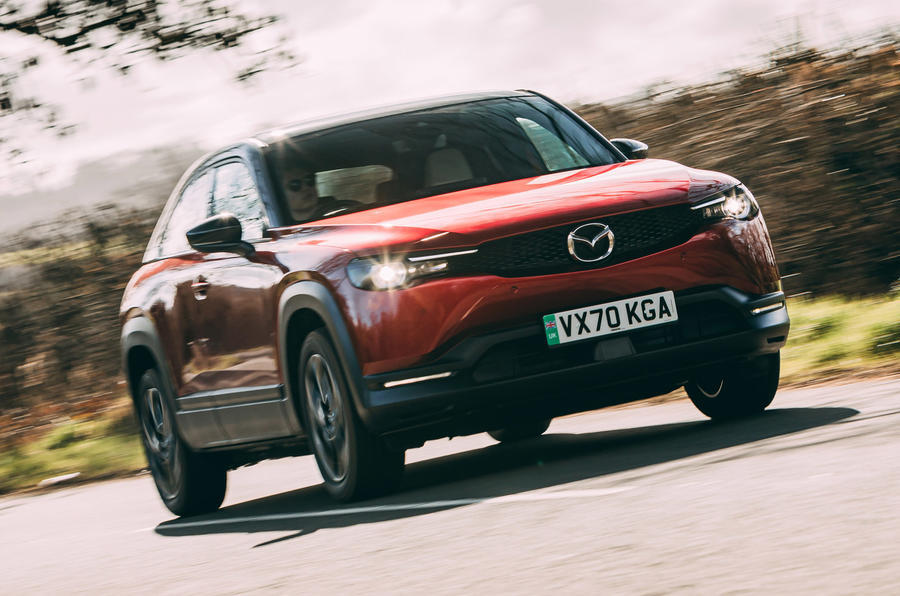- Orders are now open for the petrol and diesel versions of the New C4 X, following high demand from customers.
- The range complements the fully electric New ë-C4 X, giving buyers the option to choose the powertrain that suits their needs.
- The launch includes two petrol engines and one diesel engine.
- Petrol models are available in Sense, Sense Plus, Shine, and Shine Plus variants, while diesel models are exclusively sold in Shine Plus.
- This range update follows the earlier update to the New ë-C4 X, which introduced a next-generation 54kWh battery technology.
- The New ë-C4 X is equipped with a 54kWh battery and a 115kw electric motor, enabling it to achieve a range of up to 260 miles (WLTP) on a full charge.
In response to high demand from customers, Citroën has announced that orders are now open for the petrol and diesel variants of the New C4 X. These models complement the fully electric New ë-C4 X, which has already been available in the market. The prices for the petrol and diesel variants start from £22,080 OTR, and the first deliveries are scheduled to begin in July 2023.
At the launch, customers have the choice between two petrol powertrains: the PureTech 100 S&S with a six-speed manual transmission or the PureTech 130 S&S EAT8 with an eight-speed automatic transmission. As for the diesel variants, they will be sold exclusively with Citroën’s efficient BlueHDi 130 S&S EAT8 with an eight-speed manual transmission.
Starting from July production, the New ë-C4 X will receive a powertrain upgrade, featuring a 115 kW electric motor with a 54 kWh battery. This new powertrain, which was announced in May, will increase the range of the New ë-C4 X to up to 260 miles (WLTP), compared to the previous range of 222 miles (WLTP). This upgrade will be exclusively available on the new ë-series trim level, in addition to the existing 100 kW motor with a 50 kWh battery that offers a range of up to 222 miles (WLTP).
The petrol variants of the New C4 X will be available in Sense, Sense Plus, Shine, and Shine Plus variants, while the diesel models will be exclusively offered in the Shine Plus trim. The fully electric New ë-C4 X will continue to be available in Sense, Shine, and the new ë-Series trims.
The ‘Sense’ models come with 18-inch ‘Aeroblade’ alloy wheels, Advanced Comfort® Seats, and a 10-inch touchscreen with wireless Apple CarPlay™ and Android Auto. They are also equipped with features like Active Safety Brake, Speed Limit Information, Lane Keeping Assist, Forward Collision Warning, and Driver Attention Alert.
The ‘Sense Plus’ models build on the standard equipment of the ‘Sense’ versions and add My Citroën Drive Plus, the next-generation infotainment, and navigation system with integrated natural voice commands. They also feature a head-up display and a reversing camera with Top Rear Vision.
Stepping up to the ‘Shine’ trim level, the exterior look is enhanced with dark tinted rear windows, chrome details, and bi-tone diamond-cut versions of the 18-inch ‘Aeroblade’ alloy wheels. Additional convenience features include Automatic Intelligent Beam Headlights, an auto-dimming electrochrome interior rear-view mirror, and front and lateral parking sensors. Safety is improved with Advanced Active Safety Brake with night-time and cyclist detection, as well as Extended Traffic Sign Recognition.
The range-topping ‘Shine Plus’ versions further enhance the ‘Shine’ models with heated Alcantara® seats for the driver and front passenger, as well as Citroën’s Highway Driver Assist, a level 2 semi-autonomous driving technology that combines lane-keeping assistance with adaptive cruise control for a more relaxed driving experience. The Ë-C4 X electric versions have their own dedicated top trim level called ‘ë-Series’, which includes features like wireless smartphone charging, the 8-speaker Citroën Hi-Fi system, Onyx Black ‘Aeroblade’ 18-inch alloy wheels, and a distinctive bi-tone Perla Nera Black roof.
Please refer to the table below for the trim levels, powertrain options, CO2 emissions, and prices for the different variants:
|
TRIM LEVEL
|
POWERTRAIN
|
CO2 g/km
|
MRRP OTR
|
|
Sense
|
PureTech 100 S&S 6-speed manual
|
121
|
£22,080.00
|
|
100kW electric 50kWh battery
|
0
|
£31,995.00
|
|
Sense Plus
|
PureTech 130 S&S EAT8 8-speed auto
|
130
|
£25,435.00
|
|
Shine
|
PureTech 130 S&S EAT8 8-speed auto
|
129
|
£26,980.00
|
|
100kW electric 50kWh battery
|
0
|
£34,495.00
|
|
Shine Plus
|
PureTech 130 S&S EAT8 8-speed auto
|
129
|
£27,540.00
|
|
BlueHDi 130 S&S EAT8 8-speed auto
|
126
|
£29,170.00
|
|
Ë-Series
|
100kW electric 50kWh battery
|
0
|
£36,295.00
|
|
115kw electric 54kWh battery
|
0
|
£37,195.00
|













